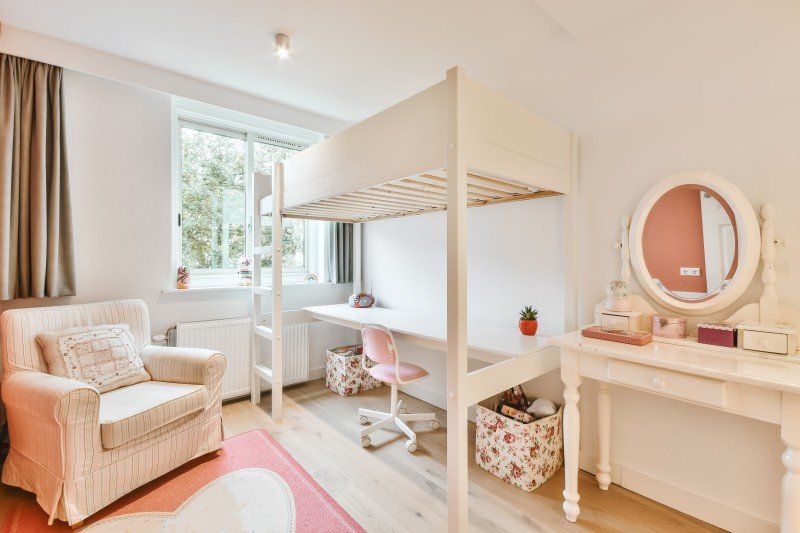The Ultimate Guide to Bunk Beds for Children: Safety, Styles, and Benefits
When it pertains to styling a child's space, parents often face the dual difficulty of maximizing space while ensuring convenience and performance. Bunk beds have emerged as a popular solution that resolves these needs, using not simply sleeping plans but also contributing to a room's aesthetic. In this thorough guide, we will delve into different aspects of children's bunk beds, focusing on their benefits, safety functions, styles, and factors to consider for parents contemplating this purchase.
Table of Contents
- Advantages of Bunk Beds
- Security Features to Consider
- Kinds Of Bunk Beds
- Style and Style Options
- Maintenance Tips
- Frequently Asked Questions (FAQs)
1. Benefits of Bunk Beds
Bunk beds use many advantages for kids and their parents. Here are some crucial advantages:
- Space-Efficiency: Bunk beds are an outstanding service for smaller spaces. By stacking one bed on top of another, more floor space is offered for play, storage, or research study areas.
- Economical: When children share spaces, bunk beds can lower the requirement for acquiring 2 separate beds, thus saving money.
- Fosters Social Interaction: Bunk beds can assist siblings or buddies bond by sharing a space, developing opportunities for social development.
- Enjoyable Factor: The concept of sleeping "up high" adds a lively aspect to bedtime, making the shift to sleeping alone easier for some children.
- Versatile Design: Bunk beds are available in various designs, colors, and develops to match any room theme, permitting for personalization that reflects the child's character.
2. Safety Features to Consider
Security is paramount when it comes to children's furniture, particularly when it comes to bunk beds. Here are some important safety features to evaluate:
| Safety Feature | Description |
|---|---|
| Tough Construction | Frames made from strong wood or metal are preferred. |
| Guardrails | Ought to be at least 5 inches high and extend along both sides of the upper bunk. |
| Ladder Design | Ensure ladders are securely attached and have non-slip actions. |
| Bed mattress Size & & Fit | Must fit comfortably within the frame to prevent spaces. |
| Weight Limit | Constantly follow the producer's weight limit suggestions. |
3. Types of Bunk Beds
Bunk beds come in a number of designs, accommodating various requirements, choices, and space sizes. Here are some typical types:
- Standard Bunk Bed: The most standard type, with one bed on top of another.
- Loft Bed: Features a high upper bed with space beneath for a desk or play location.
- Futon Bunk Bed: Combines a top bunk with a futon on the bottom, supplying flexibility for seating and sleeping.
- L-Shaped Bunk Bed: This style has the top bunk set at a perpendicular angle to the bottom, creating a little corner area.
- Triple Bunk Bed: Accommodates 3 children utilizing stacked beds, suitable for large households or sleepovers.
4. Style and Style Options
When it concerns selecting a style for children's bunk beds, the options are virtually limitless. Here are some popular styles:
- Traditional Style: Often made from wood, these bunk beds include elaborate information and are best for traditional or rustic-themed spaces.
- Modern Style: Characterized by tidy lines and minimalist styles, contemporary bunk beds can be made from metal or wood.
- Themed Bunk Beds: Some brand names provide bunk beds formed like castles, automobiles, or play houses, making bedtime less of a task.
- Convertible Bunk Beds: These can be separated into 2 specific beds, offering versatility as children grow.
- Colorful Options: Bunk beds in vibrant colors can include a sense of delight and playfulness to any room.
5. Upkeep Tips
Keeping a bunk bed is important for longevity and safety. Here are some ideas:
- Regular Inspections: Check for loose screws or bolts every few months and tighten them as required.
- Cleaning: Wipe down frames regularly to prevent dust build-up; think about using a vacuum for hard-to-reach locations.
- Bed mattress Care: Rotate bed mattress routinely and use protective covers to prolong their life.
- View for Wear and Tear: Look for any signs of damage in the wood or metal and consider replacing parts if essential.
- Teach Kids Safety Rules: Encourage kids to utilize ladders correctly and ensure they understand the security functions of their bed.
6. Frequently Asked Questions (FAQs)
Q1: What age is appropriate for sleeping in a top bunk?
A1: Typically, kids aged 6 and older are suggested for upper bunk sleeping, as they have the essential motor abilities to climb securely.
Q2: Do bunk beds feature a mattress?
A2: Most bunk beds are sold as frames only, so you will need to buy mattresses separately. Make sure that the bed mattress fits the frame comfortably.
Q3: Can bunk beds be separated later on?
A3: Many designs enable conversion into two private beds, offering versatility for future requirements.
Q4: How can I guarantee my kid's safety on a bunk bed?
A4: Comply with safety standards and make sure guardrails, a strong frame, and a protected ladder remain in location.
Q5: Are there weight limits on bunk beds?
A5: Yes, constantly check the manufacturer's specifications concerning weight limits to make sure safety.
Bunk beds for kids can serve multiple purposes while guaranteeing security and style. With varied Bunk Beds Store and designs readily available on the market, parents can discover an unit that not just optimizes bed room space but also reflects their kid's distinct tastes. Just like any furniture, understanding safety features, upkeep, and how they fit into a kid's way of life will ensure that these beds stay a practical furniture service for many years to come.
Through mindful consideration and adherence to safety standards, bunk beds can provide a long-lasting, fun, and functional sleeping service that children like.

